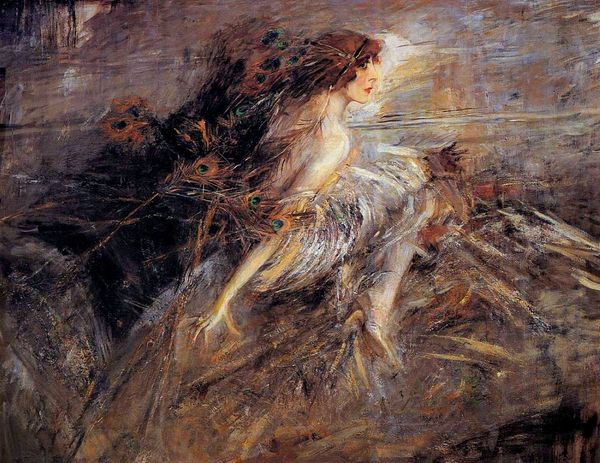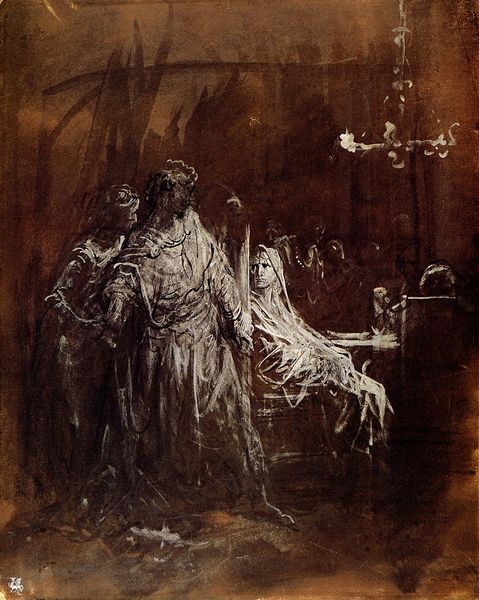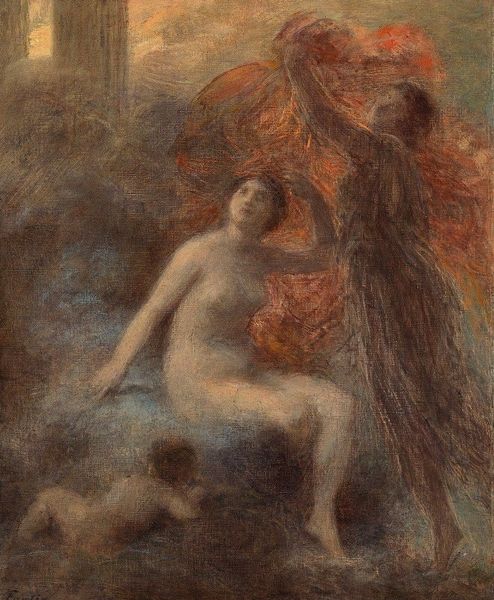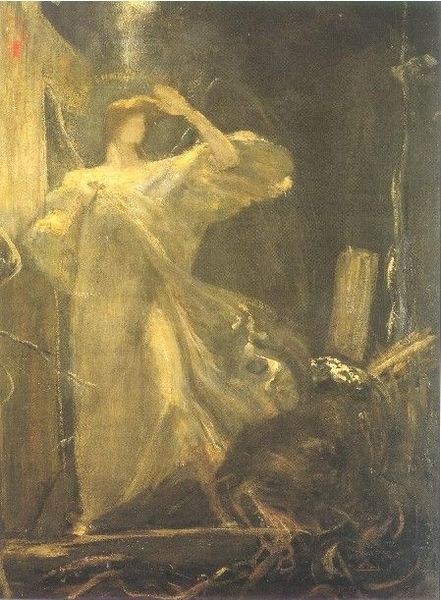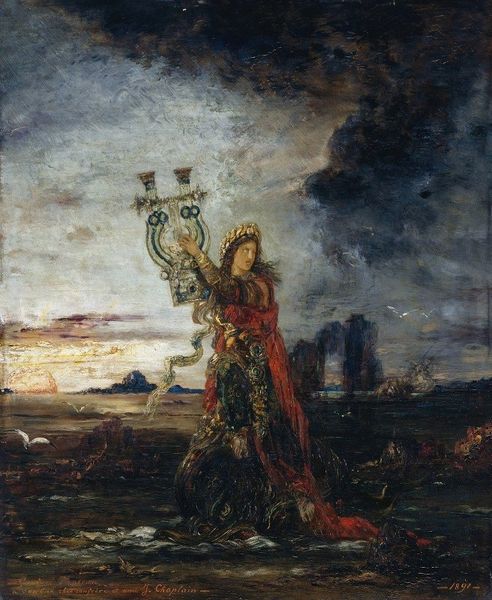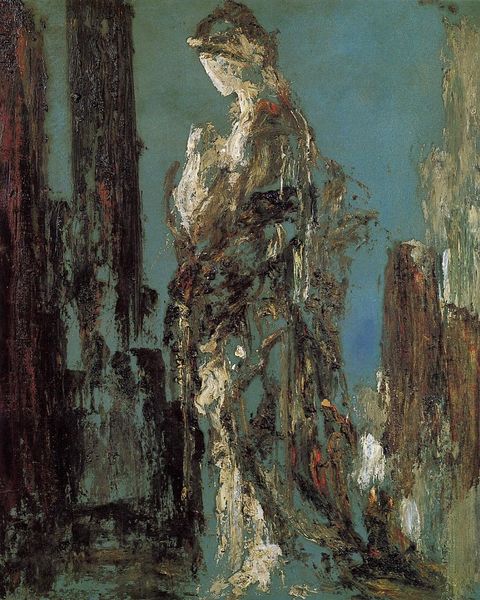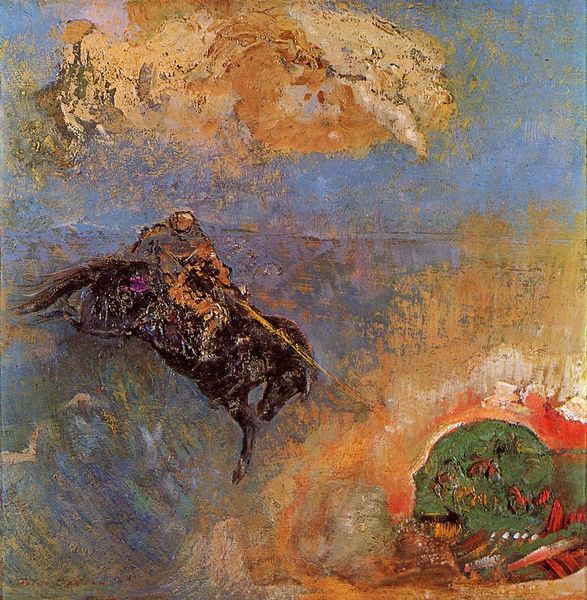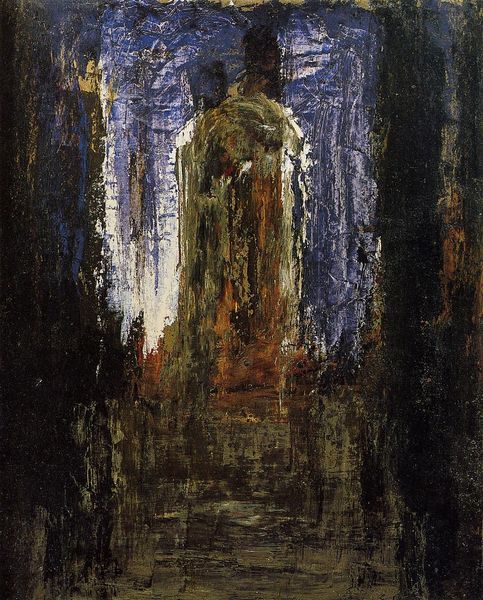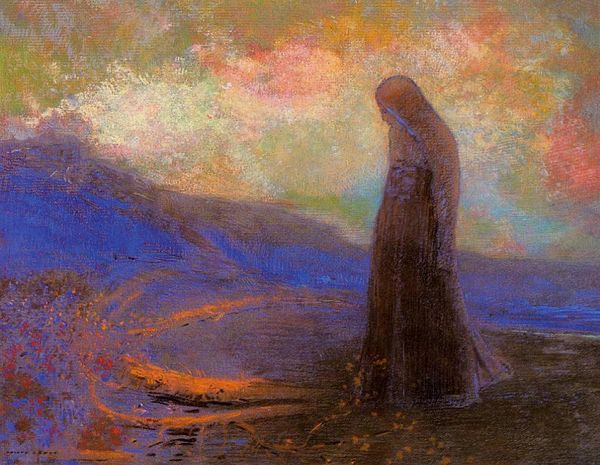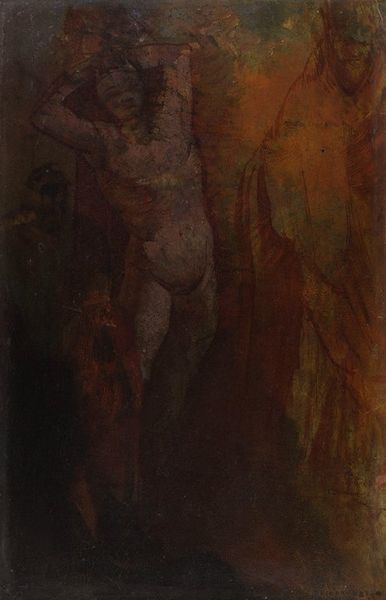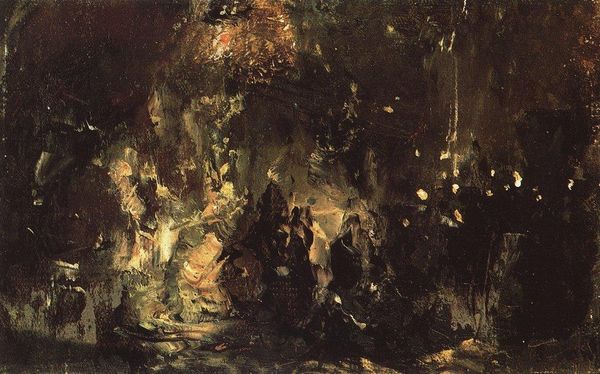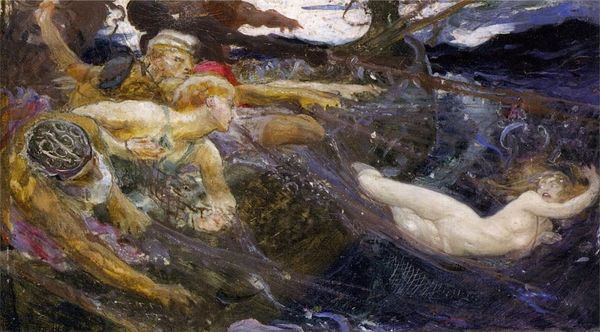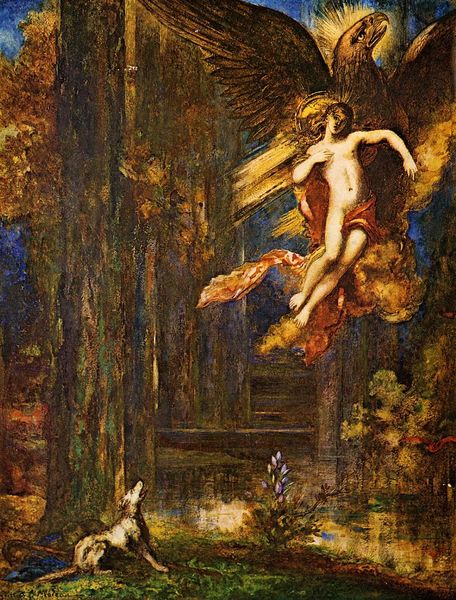
Copyright: Public domain
Editor: So here we have Ilya Repin's oil painting, "Follow me, Satan", created in 1895 using impasto. It certainly evokes a sense of the dramatic and unsettling through its loose brushwork and murky palette. What do you make of the relationship between form and content in this work? Curator: The dynamic composition immediately arrests the viewer. Notice how Repin contrasts the ethereal, almost spectral, figure on the left with the dense, darkly impastoed depiction of Satan. This juxtaposition, rendered through the physicality of paint, signifies a powerful conflict. Note the tension implied by their gazes, as well as the single line joining them. Is it an agreement? A command? An inevitability? Editor: It is compelling how much the application of paint contributes to the subject matter itself. Is this tension purely formal or are there additional layers? Curator: Consider how the textures contribute to meaning. The roughness, particularly in the figure of Satan, embodies a kind of moral and perhaps physical decay. In contrast, the smoother, more thinly applied paint on the other figure lends to an idea of purity or innocence. Also consider the singular use of vivid colour, against the near monochromatic background. How might the artist be using these contrasts to drive home his message? Editor: The deliberate choice to depict one figure with so much textural weight and the other as almost translucent certainly amplifies the conceptual contrast at play. Thank you for that explanation. Curator: My pleasure. Paying close attention to such visual elements, in my opinion, grants access to a deeper understanding.
Comments
No comments
Be the first to comment and join the conversation on the ultimate creative platform.

